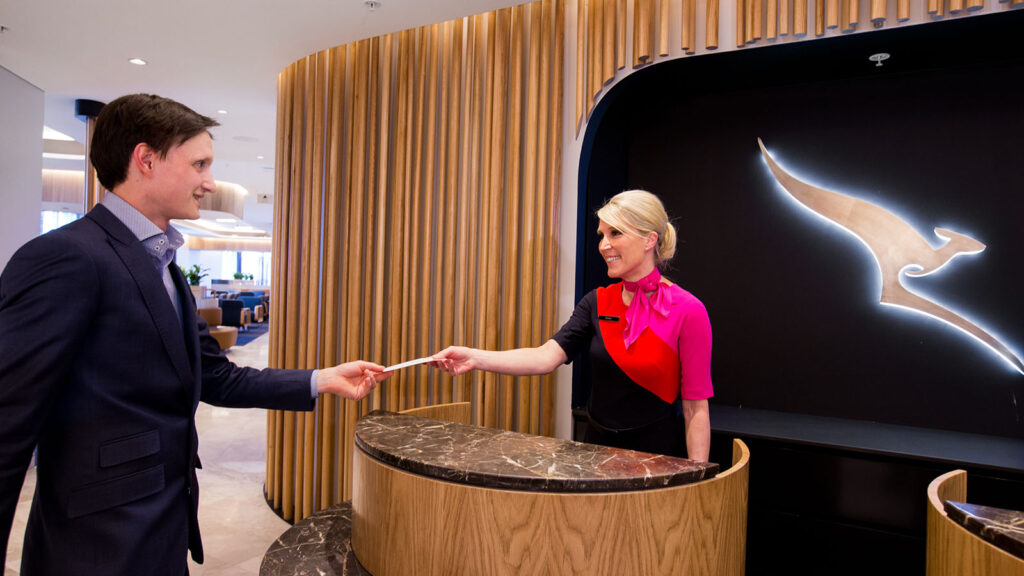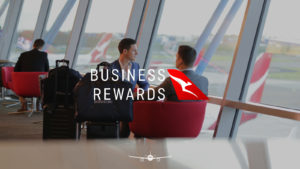If you’re flying somewhere and then back again, logic might suggest booking a return ticket. On paper, things are simpler – there’s only one booking to keep track of. And for international flights, booking return trips avoids pricier one-way fares. But on Australian domestic flights, one-way fares are the norm.
There’s usually nothing to save by booking a round-trip domestic itinerary as opposed to two one-way flights. And for the savvier flyers – or those whose plans often change – making one-way bookings can be a better way to go. Here are some of the reasons why I’ll usually book domestic trips on two separate tickets, even if flying there and back aboard the same airline.
You’re not locked in to one airline when you book one-way
When you book a round trip ticket with a domestic airline, you’re generally going to be flying that airline both ways. After all, booking a flight on the Qantas website isn’t going to get you fare prices on Virgin Australia! But when you book your journey as two one-way tickets instead, you’re in complete control.
If you’re booking flights with dollars, you can choose the most cost-effective option for every departure. And of course, if spending points, you can make the most of reward seat availability. That’s handy if you have both Qantas Points and Velocity Points to spend.
In fact, I often book domestic flights using points. And quite often, one airline will have a seat on the way out, and the other will have a seat on the way back. Ultimately, it’s about having the freedom to choose the best flight at every stage of the way – not just the best pairing as when flying round-trip.
It’s easier to change flights on one-way domestic bookings
In my experience, it can be far easier to change domestic flights booked on one-way tickets than on return trips. That becomes even more true when you’ve booked using frequent flyer points.
I’m a regular traveller in domestic Economy when booking using points. And I’ve found that with Virgin Australia, changing your plans often requires cancelling the reservation entirely and then making a new booking. This seems to happen any time there’s an adjustment in points, or a change in cabin or flight route. Even via the call centre, it’s the only way about it.
With that in mind, booking domestic flights on one-way tickets just helps keep things simple. If I’d booked a return ticket and needed to change or cancel only one flight, I’d be stuck. I’d have to wipe the entire reservation – losing my original reward seat on the flight I don’t want to change – and hope there was another seat available to rebook.
But with one-way bookings, I can chop and change as needed. While I do appreciate that I’m fortunate to travel more than most – and my plans probably change more than most – I’m certainly not the only person who’ll ever need to change their flight!
In fact, it’s not just Virgin Australia that makes changes trickier on bookings with more than one flight. Qantas has this blanket rule: ‘Changes are not permitted on any Classic Flight Reward flight booking once travel has commenced.’ In other words, once you’ve begun a trip, you can’t amend the flight home even if your plans change.
Now sure, you might be lucky and able to change it at the airport on the day you fly. But if you need to fly home earlier, or want to stay longer, that’s hard. If you’d booked your return trip as two one-way reservations instead, things are a lot easier.
You can get stuck with the most restrictive fare rules
By having more than one separate ‘trip’ on your airline itinerary, it pays to be aware of the fine print. Quite often, where there are multiple flights on a ticket, the flight with the most restrictive fare rules dictates the entire ticket.
Let’s say you have two flights on a booking: an outbound, and a return. One is booked in the cheapest fare class (and non-refundable), and the other, in the most flexible category. If you try to cancel the whole booking, that non-refundable flight makes things very messy.
Now, the exact rules will vary between airlines and individual fares. But take Qantas, for instance, which allows travellers to combine reward bookings and revenue fares onto a single ticket. Classic Reward flights are usually flexible in that they can be cancelled and refunded for a fee. But as in the example I’ve just made, if combined with a non-refundable ticket, the whole ticket becomes non-refundable.
Here’s Qantas’ policy. ‘If you combine Classic Flight Rewards with non-Classic Reward fares (“Commercial Fares”), the most restrictive fare condition of those Commercial Fares apply to the segments booked as Classic Flight Rewards for booking changes, cancellations and refunds.’
Really, there’s no need to combine the two on the one reservation, unless one flight is directly connecting to the other. If you’re using points in one direction, and buying a ticket in the other, making two separate bookings is just smart.
Booking domestic trips on one-way tickets boosts your Qantas Business Rewards ‘flyer bonus’
As a Point Hacks reader, we’re sure you’re familiar with the Qantas Business Rewards program. But if not, to summarise it briefly, one of its benefits is allowing businesses to earn points when their employees travel for work. This takes place while the employee gets to earn their Qantas Points and Status Credits as normal – it’s a win-win.
But in recent times, Qantas has rolled out a fresh incentive. When somebody travels with both their Qantas Frequent Flyer number and a Qantas Business Rewards number on their ticket, they’ll earn a bonus 250 Qantas Points into their personal account. This is known as the ‘flyer bonus’.
It’s a great incentive to make sure all those digits are linked up before travel. But those with an eye for detail will notice that this bonus applies once, per booking.
Think about that for a minute. If you take a domestic trip and have both flights booked on the same ticket, you earn one bonus of 250 Qantas Points. But if you took those same flights, but each booked as a one-way itinerary, you’d earn one bonus per itinerary. That’s 500 Qantas Points from the exact same flying.
Sure, it’s a small change. But on some routes, this actually represents earning 31% more Qantas Points per flight. Qantas’ Minimum Points Guarantee in domestic discount Economy is 800 Qantas Points. For instance, a Red eDeal from Sydney to Melbourne. But with the ‘flyer bonus’ on top, every one of those flights will ultimately fetch 1,050 Qantas Points.
Who wouldn’t want to earn up to 31% more Qantas Points, at no extra cost? Exactly.
Booking domestic one-way flights makes your Velocity Points haul clearer
While Qantas awards points based on the distance and fare family of each flight, Virgin Australia does things differently. On domestic flights, travellers instead earn a base of five Velocity Points per $1 spent.
But here’s the thing. When you book a return ticket, the price of each flight may vary. One flight might be a cracking deal, while the other is on a Friday afternoon and unavoidably more expensive. But in my experience, when Velocity credits the points, things get murky.
The system doesn’t look at the fare for each flight and give points based on that specific flight’s fare price. Instead, the system takes the fare paid for the total booking and divides it by the number of sectors. Then, it multiplies that number by five, to get the points for any given flight.
You’re probably wondering, why does that even matter, if it all adds up in the end? Well, for one, I always like to check that I’ve earned the correct number of points. And when things like this happen in the background, it makes things that much opaquer. And if your plans change mid-trip and you are indeed able to rearrange your ticket, that’s when your points haul might take a hit.
You might have booked an Economy Flex fare for an outbound flight, and a cheaper Economy Choice for the return. When the Economy Flex fare credits to your Velocity account, you won’t have necessarily pocketed five Velocity Points per $1 spent on the Flex fare. The ticket’s ‘average fare’ will be lower – as will your points haul. It’s only when you take that subsequent, cheaper flight that you’d get the rest of your points from the higher-value outbound leg.
All sound too complicated? I think so too. That’s why I just book my domestic hops as one-way fares to keep things simple.
When booking one-way tickets isn’t as helpful on domestic flights
There are lots of reasons that one-way bookings make sense for domestic travel. But there is one key downside of doing the one-way dance versus booking a return trip. That’s cancellation fees.
This stings on bookings made with points. With Qantas, you’ll pay a fee of 6,000 Qantas Points per cancelled booking, not per cancelled flight. Naturally, this means if you end up completely cancelling a domestic trip booked as two one-way flights, you’ll be out 12,000 Qantas Points, rather than 6,000 Qantas Points.
It’s a similar policy at Virgin Australia, where you’ll pay either 4,500 Velocity Points or $35 per cancelled reward booking. (Personally, I always pay the $35, as I’d rather keep the points for later). But it’s the same deal: with two cancelled bookings, you’d be up for two cancellation fees, however you pay.
I’m mindful of this when making my bookings. And if I know that the flights in a round-trip journey will be firmly linked, I’ll consider booking them together. For instance, on an upcoming trip to Los Angeles, I’ll be zipping over to Denver to catch up with an old friend. I know that if plans changed and I ultimately needed to cancel my LA-Denver flight, I’d need to cancel the Denver-LA leg too. So in that instance, I’ve booked both flights on a single reservation using points. Easy.
Also read: The Ultimate Guide to Qantas Points Club and Points Club Plus
Feature image courtesy of Qantas.
Stay up to date with the latest news, reviews and guides by subscribing to Point Hacks’ email newsletter.







Hope that makes sense – if not, that’s also fine.
Return domestic fares have not been available in Australia for years.